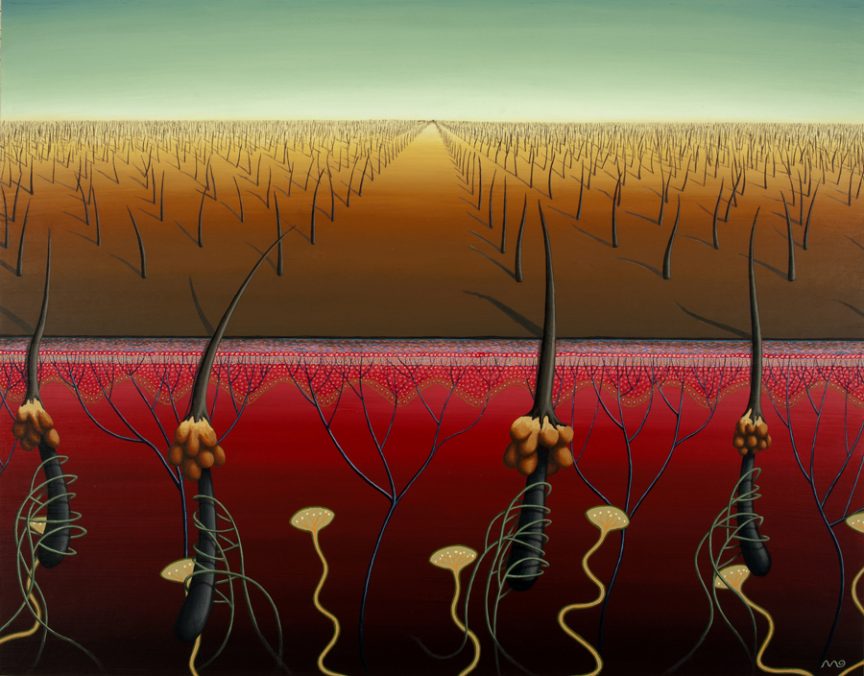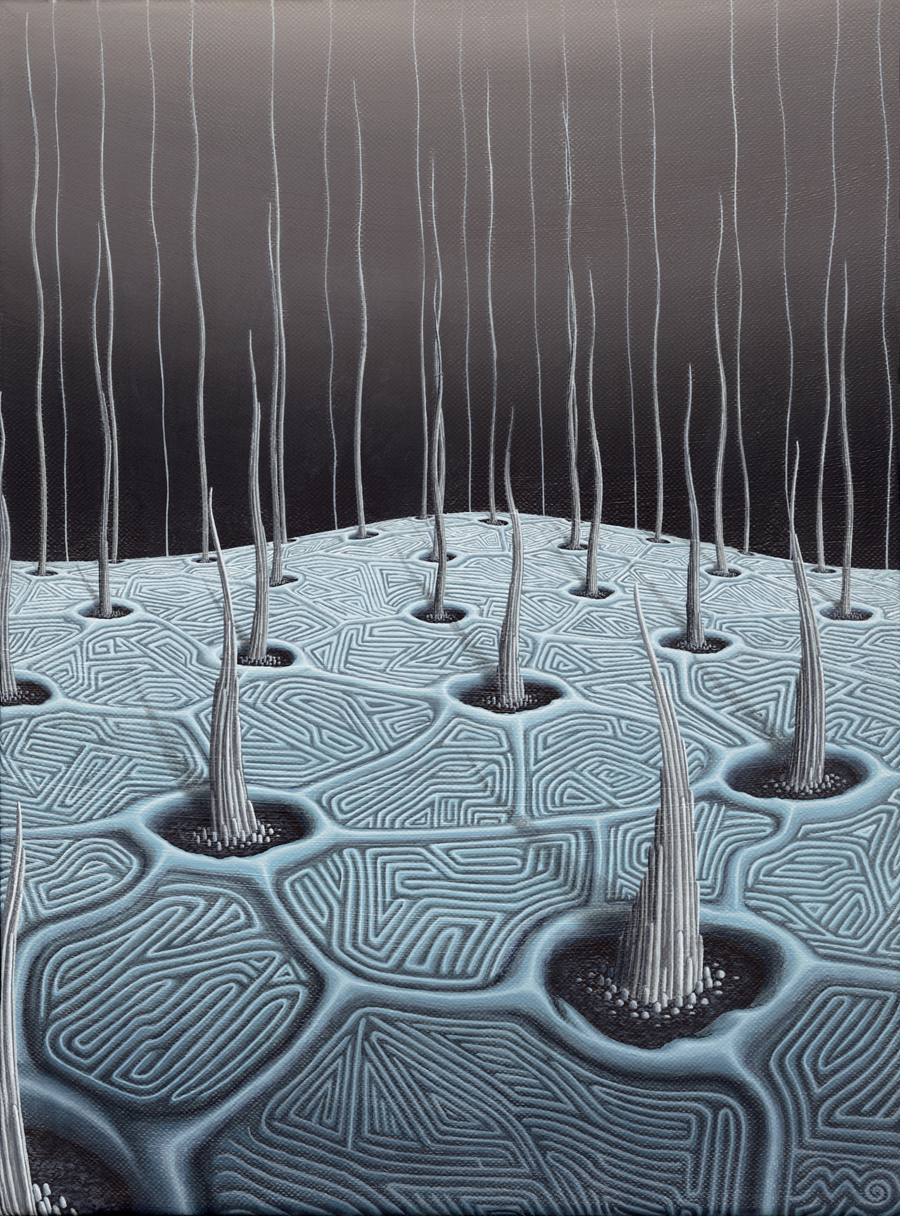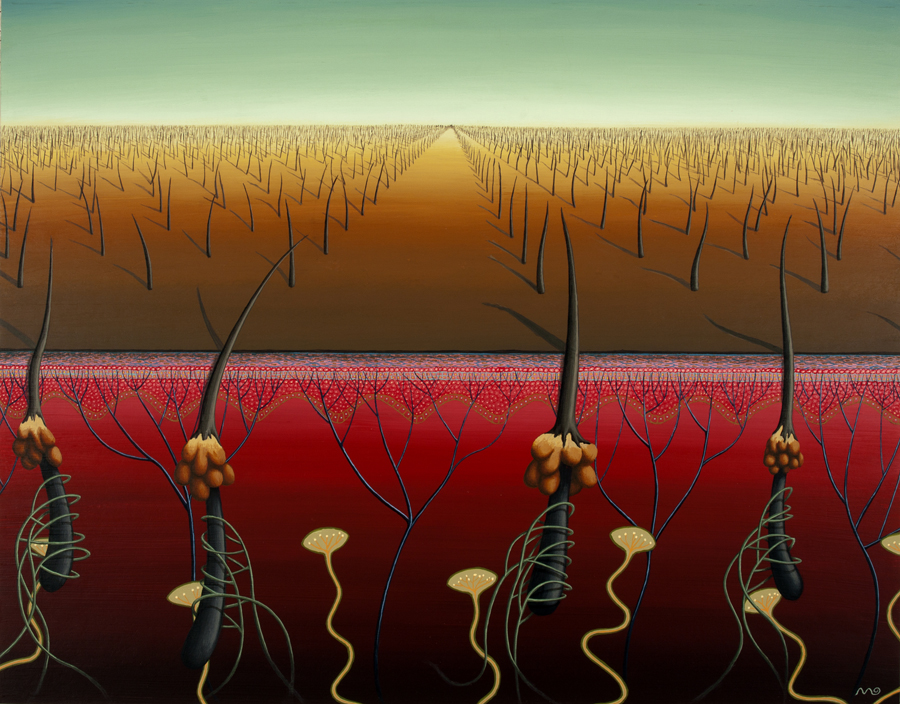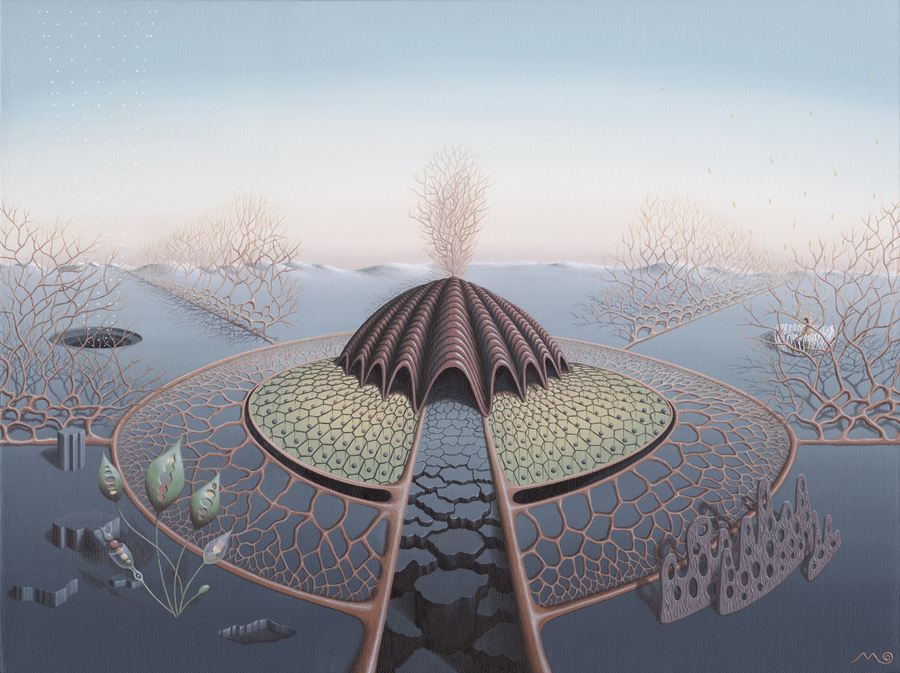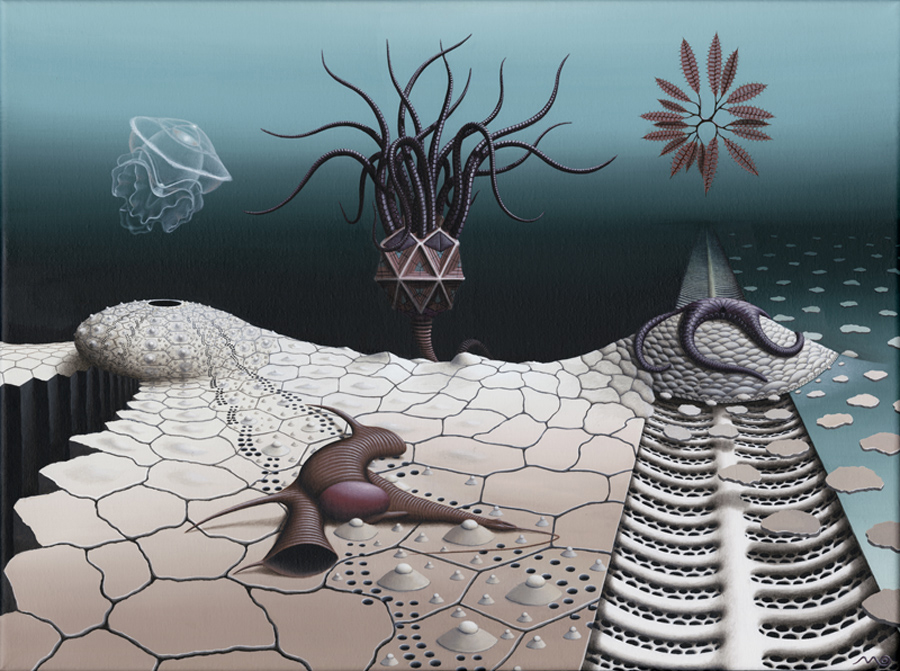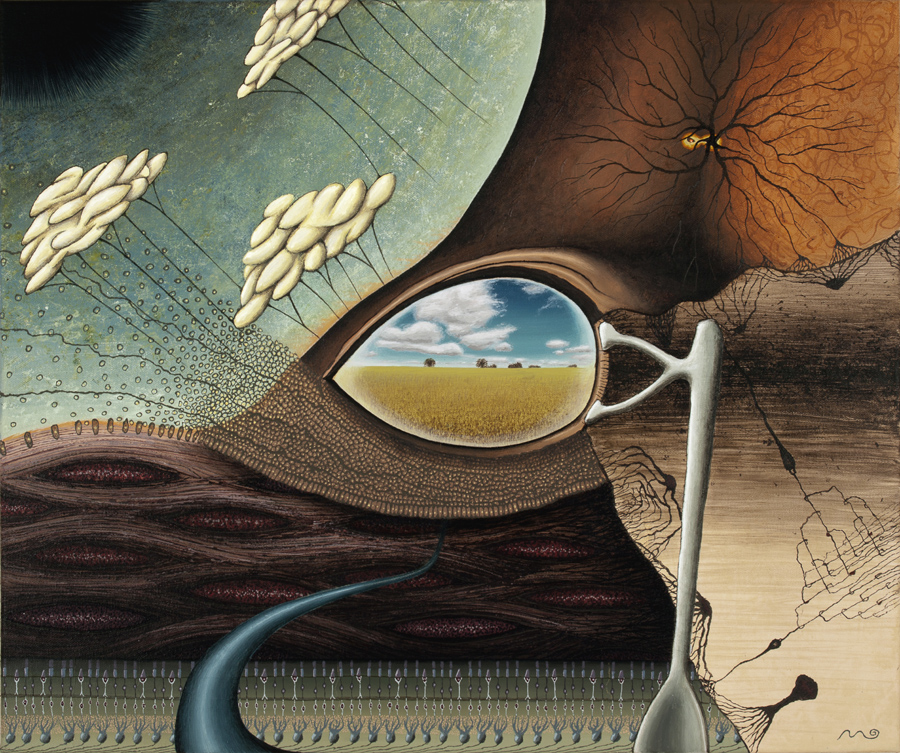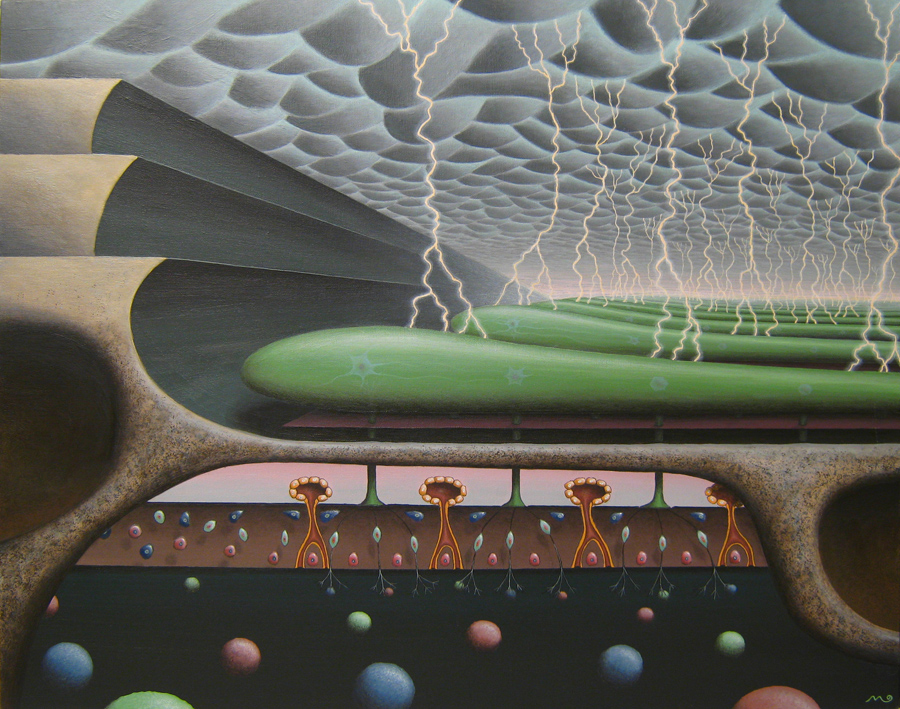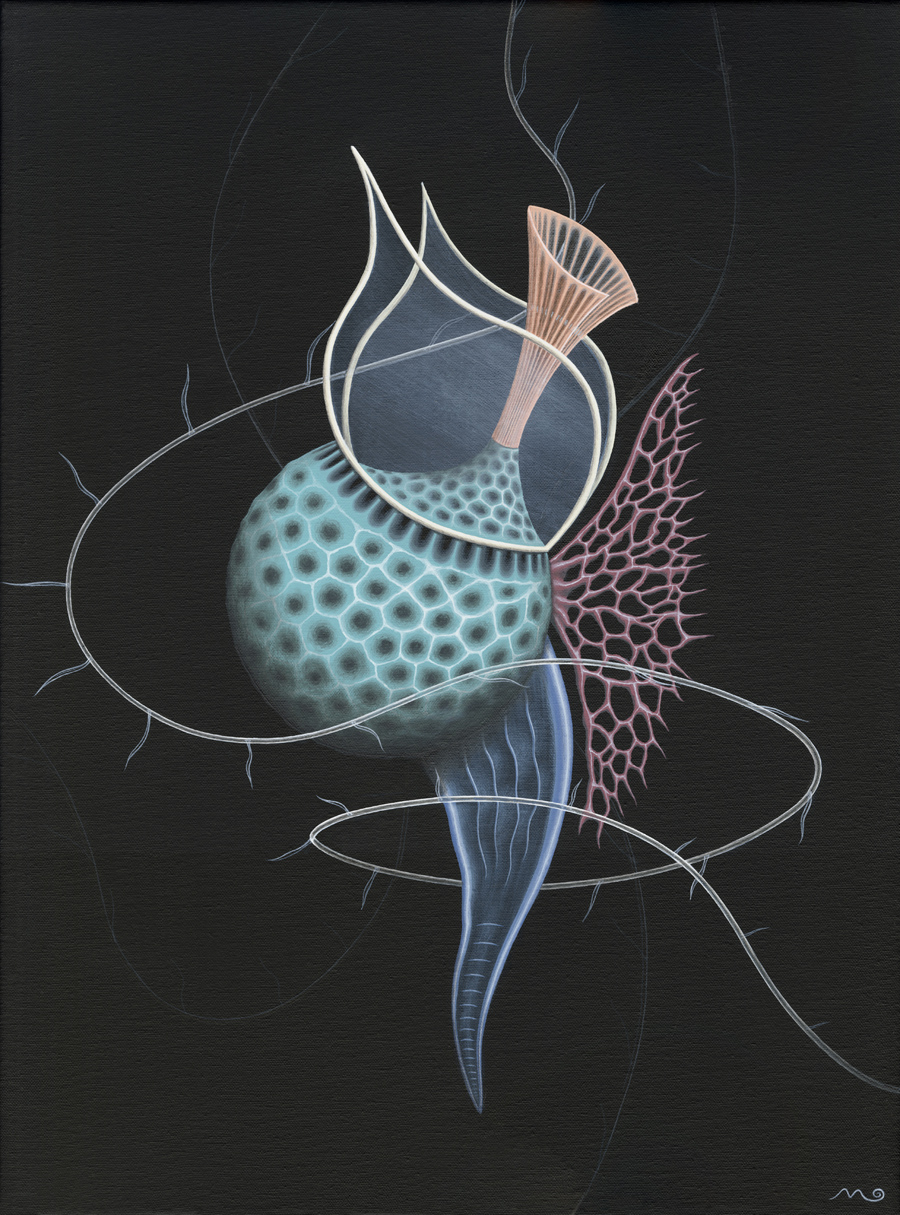Name: Micah Ofstedahl
Which came first in your life, the science or the art?
The art. As early as I can remember I would ask my parents for the “White-Out” when I went outside the lines in my colouring books. At least now I am creating my own lines to follow. It’s funny how we don’t change in some ways because I am still a bit of a perfectionist when it comes to my painting. I can’t help myself from creating clean, flowing lines with the paint. Science has long been an interest of mine as I remember being amazed by microscopic images, such as cells, in grade school. My fascination for science and the details of nature has only grown since. It wasn’t until I was in my late twenties, however, that I incorporated science into my art.
Which sciences relate to your art practice?
Human anatomy was my first main influence after I came across Grey’s Anatomy while looking for inspiration. I was particularly drawn to the less recognizable images, such as those at the cellular level. The vascular system, cross-sections of bone and other patterns also stood out to me because of their ability to represent other things in my art. The networking pattern in our veins down to our capillaries, for example can be seen at many levels of nature (e.g. rivers, trees), or even conceptually such as in a family tree or in evolution. Other biological forms entered into my work when I discovered Ernst Haeckel. His illustrations of radiolarians and other hidden beauty has seeped into my work quite a bit. You could also say psychology in the sense that about half of my work is inspired by physical science and the other half is an exploration of the subconscious and the mystery of life. Science is as much about the questions as it is the answers. This is where the surreal aspect of my work comes into play. Even I, as the artist, have to sit back and try to figure out where some of it comes from.
What materials do you use to create your artworks?
I work in acrylic on canvas. I begin with a rough pencil sketch in my sketchbook to lay out the general composition and subject matter, but I try not to put too much into the plan. I work one step at a time and leave a fair amount up to intuition.
Artwork/Exhibition you are most proud of:
I am probably most proud of my first “surreal, biological landscape” painting Mother’s Egg. I was just getting back into painting, and I spent several months on it without any intentions of getting too serious about an art business. If I may say so, I was pleased with the results and knew I had found my style. It was the first painting I sold and it gave me the confidence to pursue painting as a business.
Which scientists and/or artists inspire and/or have influenced you?
If I were to pick one from each field, I would say I am a mix of Salvador Dali and Earnst Haeckel (although Haeckel may also be more of an artist than scientist). I enjoy the clean detail and believability of Dali’s surreal landscapes. Haeckel’s illustrations offer me a plethora of inspiration from the natural world with just enough detail to allow me to take bits and pieces and put my own twist on it. More than anything, I am inspired by my own experience with nature and watching the process of change and reproduction throughout the seasons.
Is there anything else you want to tell us?
Art and science aren’t so different from each other. I believe they both are a quest to understand ourselves and the world around us.

